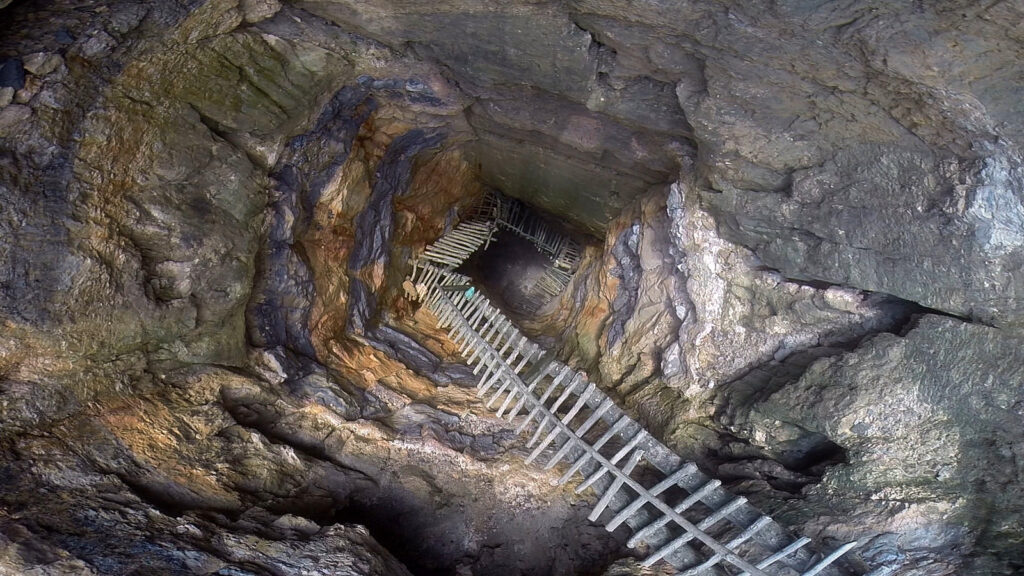
Colonizing Kashmir is a remarkable book that changes the way we understand not only the post-colonial experience of Kashmir, but histories of development, occupation, and counter-insurgency that extend to many other regional histories of South Asia marked by the violence of state-building after 1947. It is a book that brings Kashmir and Kashmiris to the forefront of the historiography of post-colonial development by exploring the emergence of this governing technology in relation to themes of sovereign violence, the politics of secularism, corruption, and militarization. At one level, the “colonizing” of Kanjwal’s title alerts us to the types of governing continuities between the post-colonial Indian state under Jawaharlal Nehru, Bakshi Ghulam Mohammad, and the Indian National Congress, and their British imperial predecessors. At another, the book also opens new considerations of democracy and its subversion, international law and institutions, and the redefinition of religious and regional identities in the wake of partition. How to parse these continuities and differences requires, as Kanjwal shows, moving away from official narratives of either the Indian or Pakistani states. It forces us instead, as I will try to draw out here, to engage the problem of post-colonial sovereignty as an active and ongoing project, and one that can be traced from the experiences of communities living under varied projects of state building and state separatism.
Sovereign border-making is the lifeblood of states, extending not only through the fungibility of geopolitical markers on maps and re-forged in contexts of war, but also through biopolitical boundaries of citizenship identification and other routinized forms of exceptional bureaucratic work. In this way, Kanjwal’s book joins one of the insights provided by a recent ethnography of the other side of what was once the India-Pakistan border, Sahana Ghosh’s A Thousand Tiny Cuts. Ghosh’s study examines the Bangladesh-India borderland in the present, putting forward a notion of the border and its surveillance regime as an infrastructure for incompletely attempting to sever the intimate and material connections that routinely transcend geopolitical boundaries. Kanjwal’s book shows us that this incompleteness is also part of the Kashmiri story. Not only is this a book that narrativizes paths-not-taken in the recognition of Kashmir as a contested state entity in post-colonial South Asia. But it also self-consciously probes for new possibilities to think Kashmiri politics and history in the present. As she writes: “This book calls for the creation of a historiography of states that do not exist, that have not been allowed to exist, and peoples who have been denied self-determination and the right to exercise their sovereignty” (20).
I read Kanjwal’s book with my own research area in mind, namely India’s central and eastern mining belt. As the center of the nation’s extractive economy and an energy landscape subject to the forms of rentier-capitalism that underly the Indian political-corporate nexus, this region has also often been a hot zone of separatist political formations and counter-sovereign political projects. Most famously, perhaps, such conflicts rose to international significance in the 2000s with the acceleration of a Maoist insurgency and state-directed counter-insurgency that targeted mineral-rich Adivasi landscapes. Exploding at a moment in which the erstwhile leading political party, the Indian National Congress, sought to broadcast the liberal and humane achievements of its developmental strategy, these events served as an awful reminder of how violence gets distributed when resource-intensive economic growth is on the agenda.
My work primarily interrogates how the long-term production of mining frontiers fits into these political and social fissures, both shaping and exacerbating forms of regional identity, and also creating networks of patronage and power that have oftentimes blocked or subverted popular political movements led by Adivasi communities, peasant organizations, and trade unions. Adivasis, also referred to as Scheduled Tribes, have often been the central targets of the dispossessive projects of both colonial and post-colonial regimes, living across the forest uplands that became transformed by mining investments going back to the early nineteenth century. Because my research engages questions of mining—and specifically coal, the most important and ubiquitous energy source in the subcontinent—I have often been led back to the ways in which contestations over property and land ownership have defined the politics of this region, to say little here about the ecological effects of long-term mineral production in generating dispossession and struggle in their own right. The history of property here, as elsewhere, has further necessitated research into the various types of sovereign power leveled by both the colonial and post-colonial state to claim (and oftentimes not to claim) prerogatives of ownership over the subterranean earth.
Tracing a conflictual history of sovereignty and property since the nineteenth century, my research has tended to emphasize what Lauren Berlant identified as the aporetic quality of sovereignty, rather than its absolutist or strictly delineated forms (Arpitha Kodiveri and I have also tried to write about this notion of sovereignty.). I believe this notion is connected to Kanjwal’s intellectual project as well. In this figuration, sovereignty is not a settled discursive form—the kind of transparent law-making dichotomy of state and exception we see in authors like Carl Schmitt or Giorgio Agamben—but is itself an active practice often made through both the utterances of the law, and its everyday and routine silences. An aporia is a logical disjunction, a moment where coherence cannot form—and it is in those spaces where relations of power are instantiated and sustained, often violently, on-the-ground.
I examine these practices specifically through the question of land law, and the sovereign right asserted by the post-colonial state to the subterranean resources of the Indian underground. Where does this right come from? How does it relate to topographical claims to land and nature that remain vested at the site of civil contract or commercial law? The central contradiction I am concerned with is how extractive claims to the subterranean have historically come to dominate Adivasi claims to topographical land, while at the same time the post-colonial Indian state has insisted on a facetious equality of rights between surface and subsurface right holders.
As it turns out, the state’s assertion over subterranean resources is not simply grounded in the exceptional logic of eminent domain, but is itself part of a genealogy of terrestrial law-making determined by the particular historical entitlements afforded to coal zamindars in the nineteenth century, which denied Santhal and other Adivasi groups claims to three-dimensional property. The very invocation of three-dimensional property in South Asia came to be associated with the assertions of zamindars against Adivasi and Dalit communities that they identified as their tenants, thus embedding a history of agrarian class formation and struggle within the legal form of the mining lease.
It was, as many Adivasi leaders in the 1940s and 1950s pointed out, the failure of land reform by the post-colonial state that rendered the Indian sovereign, with its assertion of supremacy over the underground, into what they called a “coal zamindar” masquerading as a state.
One of the sources I have been focused on recently that touches on these themes is a diary and photo album made in 1948 by the interim governor of the Central Provinces Ravishankar Shukla.[1] Shukla took a tour of prospective coal mining areas in what today are the largest coal mines in Chhattisgarh after they were ceded to the Indian Union following the break-up of the Central Indian Princely States.
Shukla spent part of his time photographing future coalfields to explain how fossil fuel extraction was ultimately a form of social life that Binjhwar and Gond Adivasis required to modernize and become Indian citizens. Railways, roads, investment, markets, and towns would accompany the arrival of new minefields. As he wrote in a letter attached to these photographs,
I have always opposed the British attitude towards primitive people. There can be no question of keeping such people forever in a condition of primitiveness, and to rhapsodize about customs and behavior that are relics of barbarism….We should not lead these children of nature on the road to progress, nor drive them up it with blows.
Shukla’s account here is, of course, quite legible to anyone familiar with debates about the “tribal question” in the late 1940s. Yet, curiously, Shukla suggests that the goal of Adivasi modernization through coal mining was not for them to become workers in the mines. Nor, however, could they be entirely disconnected from them, as they lived on the land that would be required by the state for opening up new extractive zones. What would be their function? He instead imagined their “primitive genius” subsisting enclosed within, but ultimately separated from, the mainstreams of Indian economic life, likely living somewhere near to the minefields and benefitting from a generalized influx of commerce and society. His prognostications for their future are ultimately vague, even though his state-sponsored project entails the immediate ecological destruction of the villages and farmlands that define their social life.
It is here where one can see the aporetic qualities of a sovereign violence at work. It is a discourse that fancifully imagines social integration while seeking to enact the most brutal forms of displacement and dispossession that undermine those conditions of possibility. Shukla’s dream-like account of the coal wealth of the region—which he identifies in his diary as a “paradise”—bears a strong resemblance to the political world revealed by Colonizing Kashmir. It is often what is left unsaid that opens the door for private conversations between “men of consequence,” backroom dealing, and the blunt enactment of discretionary power. It is also such silence and innuendo that sows seeds of doubt when individuals or communities experiencing state violence raise the alarm or seek redress. How can one ascribe culpability to a state? Where are the documents to prove intent? Kanjwal’s book takes us beyond such questions. It is a history that seeks to imagine a social world outside the varied bonds and discourses of states.
[1] This account is forthcoming in: Matthew Shutzer, “Capital, Earth, and Image: Photography in India’s Mining Landscapes,” Comparative Studies of South Asia, Africa, and the Middle East, Special Issue: Materializing Land (Summer 2025).

